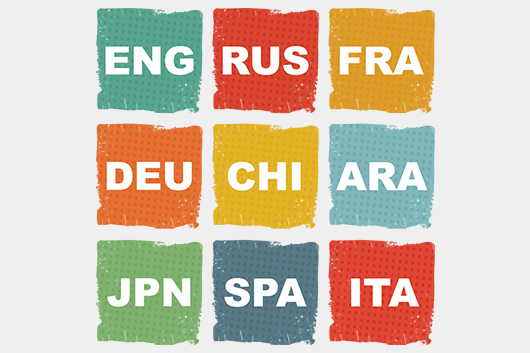
Whilst interpreter services in Australia are highly accessible, and have been shown to improve the quality and safety of health and medical care, the same consideration is not always paid to digital channels of communication. Yet producing content, such as websites, in different languages can benefit both service provider and patient – and the process is relatively straightforward.
Multicultural society; multiple languages
Non-English speaking patients are par for the course for doctors and health practitioners in multicultural countries. There are very few who haven’t had to communicate across a language barrier – whether in promoting their service, attempting to understand symptoms or explaining to a patient what care they need. Creating a multicultural website is simply the next step.
Reach your non-native English speaking patients
For a provider practising in an area with a high Chinese population it makes sense to offer information in Mandarin or Cantonese. The same goes whatever nationality is relevant.
Not only can multilingual content lead to more appointments and enquiries but it also fulfils your obligation to provide patients with the information they need to make informed choices and give informed consent. It also helps build trust in your service.
Attract clients from overseas
If you are a private clinic offering specialist services or procedures, such as a cosmetic surgeon or a fertility clinic, you might also be looking to attract overseas clients. In these cases, a multilingual website will make you much more accessible and legitimate to a foreign market.
Research shows that if information in their own language is not easily accessible to consumers, the majority won’t buy. The same applies to medical services to an even greater degree because it is their health in question.
How to create your multilingual site
One of the reasons why health practitioners don’t offer other language versions of their website is often due to hesitation over how to effectively implement and manage it. But with the right assistance, the process can be relatively straightforward.
1. Decide what you want to translate
Before you begin, the first step is to go through your current website and decide which content you are going to translate. If you want a complete translation you need to include every element including:
- Title, HTML content, alt text images, meta descriptions etc for each page
- Other web elements e.g. menus, forms, buttons, logos, banners
- Blog posts – how far back will you go?
2. Get your content translated
When translating your web content you have two main options:
1. Utilize an online translation tool such as Google Translate
Online translation tools can be timely and cost effective. However, they present a big drawback. By making a literal translation they can miss out or misinterpret key words and meanings.
According to a study by the BMJ, Google Translate has only 57.7% accuracy when used for medical phrase translations. This could have negative consequences if a non-native patient misunderstands a service or what it entails.
2. Hire in the services of a professional medical translator
This is the recommended option. By hiring a qualified translator, which specific medical expertise, you can be more confident that the content will be accurate.
3. Translation or localisation?
If you want to go one step further, you could also look to localise your site. Consider the format, layout and images – do they match the cultural expectations of your non-native English speaking patients? Do some research. If they don’t, change them.
4. Create your website
Unless you have technical knowledge or a simple CMS system in place, enlisting the help of a digital specialist is recommended to get your new multilingual content up and running. They can input the content and set up all the links and code correctly to ensure your site runs smoothly.
One of the best ways to add and manage the new content is by using easy-to-identify links to other languages on the homepage of your current English site.
A multilingual site will set you apart as a medical service provider. It will also give your patients and clients confidence in your services and ensure they have all the information they need to make important choices.
